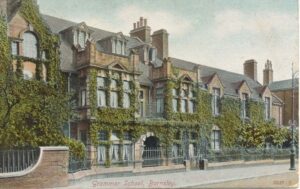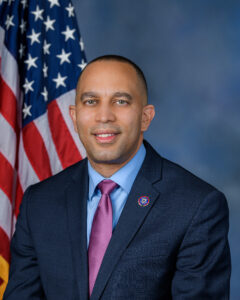Defence Minister Richard Marles summed up the situation well on Wednesday by saying we live in the most strategically complex and threatening period to exist since the end of World War II – Red Alert publisher Mr Shield
Their Lordships of the Admiralty, with their hierarchy of Admirals under the First Sea Lord; the War Office with its Secretary of State and Army Council; even the later-created Air Ministry again with its Secretary of State—it was in these historic bodies that rested the real, practical control. Moreover, the responsibility of their political heads to Parliament had scarcely been altered by the emergence of the Minister of Defence. Harold MacMillan, quoted by Arthur Tange
Approaching the lunch table I was accosted by the formidable and testy Admiral Hyman G. Rickover, creator and guardian of America’s devastatingly powerful sub-surface nuclear strike capability, and notoriously defiant of control by his nominal superior, Chief of Naval Operations Admiral Elmo R. Zumwalt. The Admiral abruptly dismissed my explanation about the need to satisfy Parliament in our democracy saying that, if we did not want the US Navy to defend Australia that was fine by him and, as a coup de grace, after listening to us he saw no reason why they should be shouting us lunch – Arthur Tange
The prudent planning of defence preparation requires genuine intellectual rigour. Instead, all that is evident in the submarine announcement is intellectual rigor mortis, and the realisation of an idea of a former prime minister who was more famous for marketing than substance. -David Livingstone – one time graduate, Australian Naval College, in SMH opinion piece 15 March 2023
Now, thanks to AUKUS, Australia’s manufacturing will be built on a foundation of defence, specifically buying and making nuclear submarines. But there is likely to be an opportunity cost in that. Given the amount of money involved there won’t be much, if any, left for anything else, such as the global energy transition, health care and agriculture – Alan Kohler New Daily 20 March 2023
Paul Keating is an old man and many of his gestures are those of an old man. His brain is still sharp; he speaks with a verbal brutality that nobody can challenge publicly because of the immensity of his achievements in nation building. This has left his successors their only pathetic defence that the world has moved on and somehow he and his views are irrelevant. It is a new world, so they say. What utter rubbish! Why take his phone calls? He’ll just slag off if we do not agree – after all, he does it in public anyway.
Wong, Marles, Albanese are saying that he is of a different age; and have become a public chorus – with a variation of the “more sorrow than in anger” theme. Wong has perfected the low affect style of the Delphic oracle. She is measured; she weathers criticism with or without abuse by corridor whispering. A perfect foreign minister of whom Talleyrand and Metternich would be proud.
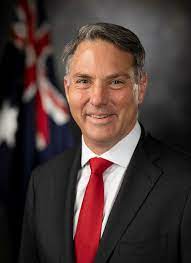
Marles is the classic politician captured by the Defence establishment. He fits the succinct description which former British Prime Minister, Harold MacMillan, himself a former Minister of Defence, warned of the capture by the “top Brass” of the defence forces. Marles grew up in Geelong Grammar School, where his father was a teacher for many years, and even with his Left credentials there’s no way he would not have been exposed as a schoolboy to those of the same ilk as those now in command of the defence forces. He is obviously comfortable being with his own class, although there are nominal differences theoretically in his political views.
There is no doubt that like so many of his predecessors as Minister, whether Labor or Coalition, whether it be “Bomber” Beazley or Peter Dutton, he has just dutifully spouted the American and or British line. And what of Bevan Shields’ description of the profundity of Richard Marles? Yes, I read it, but where is it?
Now for the Prime Minister. Here was the man who on the first day of the last Federal campaign did not know the simplest of facts, stumbled, simpered, tongue poked out for some reason. David Crowe, the SMH political writer, in a recent by line identified him as the “trippy” Prime Minister. “Trippy” is a slang term for a person under the influence of a hallucinogen, and sometimes the accidental trip up contains a modicum of truth.
Albanese does not seem to want to offend, and his antics in India where his obsequious dealings with the current Prime Minister Modi suggest that he does not quite get it. Modi is a dangerous figure, whose politics lie at the extreme edge of Hinduism, whose embrace of Putin is well known, but where the prospect of an alliance against the Chinese seems to have lured Albanese into an uncritical acceptance of a man whose abuse of civil rights rivals that of Xi Jinping. Such a contradiction did not go unnoticed by Keating – nor should it by us.
When Morrison unveiled AUKUS, it was thought that this was the dying lunge of a discredited government waving the flag of jingoism; that it would die with his demise. But that has not occurred. Morrison had dumped the French, who still have a substantial presence in the South Pacific, for an alliance with a nation which has Pitcairn Island as its last remaining possession in the Pacific. It no longer has any strategic place in the Pacific Ocean. British Prime Minister Sunak, in his AUKUS speech at San Diego on 13 March, referenced Barrow-in-Furness and Derby as places in Great Britain which would benefit from Australian nuclear submarine construction.
As reported, on 10 March 2023 the U.K. Prime Minister Rishi Sunak and the French President Emmanuel Macron held the two countries’ first bilateral summit in five years. They inter alia pledged to aim for a permanent European maritime presence in the Indo-Pacific, notably by coordinating deployment to the region of France’s Charles de Gaulle and the UK’s Queen Elizabeth and Prince of Wales aircraft carriers. No mention of submarines.
Two days later, Sunak met with Albanese prior to the photo-opportunity the next day. In the Australian Prime Minister’s words: “We discussed our shared commitment to bringing the Australia-UK Free Trade Agreement into effect to benefit businesses in both our countries.” Anything else?
As reported in the San Diego Union Tribune, Biden said Australian sailors will embed with the navies of both countries and study at schools specialising in nuclear-powered subs. In 2027, the U.S. and U.K. will begin placing their own submarines at Australian ports on a rotating basis. Now the USA has 275 vessels, 71 of which are submarines; Britain has a total fleet of 72 ships, 11 of which are nuclear submarines and, as the Union Tribune reported further, Australia has just under 50 ships, less than the Americans have docked in San Diego.
The paper dismisses the Collins class submarines as if they were some sort of ancient craft, an underwater galleon methinks. However, given all the aggressive talk about the defence capability of submarines, only two submarines have sunk enemy warships since WWII, which may say something about the deterrent capacity of having submarines. Nevertheless as Rex Patrick has noted, American and British nuclear submarines have been involved in offshore bombardment of Iraq, Afghanistan and Libya.

Did the President stick round to talk to Albanese after such a momentous decision? No, he headed off to San Diego International Airport to board Marine One to fly him to a fundraiser in Rancho Santa Fe. Albanese was off to Fiji.
In simple terms, (a) the USA, by transferring its ageing nuclear submarines to us, also transfers the responsibility of nuclear waste disposal – if nothing else. The rumblings of “not in my backyard” have already started here in Australia.
(b) The British just want to flog off their nuclear submarines, thus supporting BAE ship building in Barrow-in-Furniss and the Rolls Royce nuclear expertise facilities in Derby.
(c) Australia pays a great deal of money, essentially for some very expensive toys.
What Keating did was to draw attention to the fact that the whole business seems to have been transferred from a regime known for its stunts to a new regime which had promised political sobriety. Yet nothing had changed; no real debate was entered into as the media mostly tried to smother any such discussion. The new Government was committing Australia to this enormous expenditure which frankly, on the face of it, does not make sense.
I do not follow the Keating assertion that increasing the number of Collins submarines will provide the defensive cover which his scenario projected. Nobody seems to have explored the workforce requirement, which is an important factor given that, at different periods of time, Australia has not been able to crew the Collins class submarines and apparently currently several don’t even have commanding officers. Thus, for a time, the submarines were unable to be deployed anyway. The new submarines need more crew, and while the suggestion of blended crews superficially seems reasonable, that is only if you do not accept the current Government’s banging on about “sovereignty”.
Currently the pay for an Australian submariner is about $167,000 a year, plus various other allowances, but being crew on nuclear submarines means coping with months on end beneath the waves, working six hour shifts and where night and day no longer have relevance. Blended crews mean being able to cope for long periods of having two cultures working alongside, even if they do speak the same language. There are differences that need to be addressed in sharing facilities. For instance, US naval warships are traditionally dry. It is easy to say that potential Australian submariners will be trained offshore; but what of social costs, including the attrition rate.
Then, in the world of technology advances, the prospect of unmanned submarines looms – unmanned underwater drones. The Russians evidently have that technology and it would be inconceivable that the major submarine manufacturers are not developing these as well. Given the projected time surrounding the acquisition of Australia’s nuclear submarines, our purchases almost certainly will be dwarfed by these developments. The problem with the government propaganda is the assumption that everything else remains the same, and if they ever were, will remain on the cutting edge of technology.
David Livingstone’s opinion piece is like an antique Gatling gun deliberately mowing down the paper-thin justifications for this enormous transfer of “Australian sovereigns” from Australia to its colonial reliquary, Great Britain and the USA, whose reliability as an ally has been an article of faith adopted by both sides of Australian politics with only occasional inconvenient questioning – but certainly not by our current bunch of politicians.
The following is taken from an article published last year in an international investigative journal, Insider.
In 2005, the USS Ronald Reagan, a newly constructed $6.2 billion aircraft carrier, sank after being hit by torpedoes.
Fortunately, this did not occur in actual combat but was simulated as part of a war game pitting a carrier task force including numerous antisubmarine escorts against HSMS Gotland, a small Swedish diesel-powered submarine displacing 1,600 tons. Yet despite making multiple attacks runs on the Reagan, the Gotland was never detected.
This outcome was replicated time and time again over two years of war games, with opposing destroyers and nuclear attack submarines succumbing to the stealthy Swedish submarine.
With the Stirling engines, a Gotland-class submarine can remain undersea for up to two weeks sustaining an average speed of 6 mph — or it can expend its battery power to surge up to 23 mph. A conventional diesel engine is used for operation on the surface or while employing the snorkel.
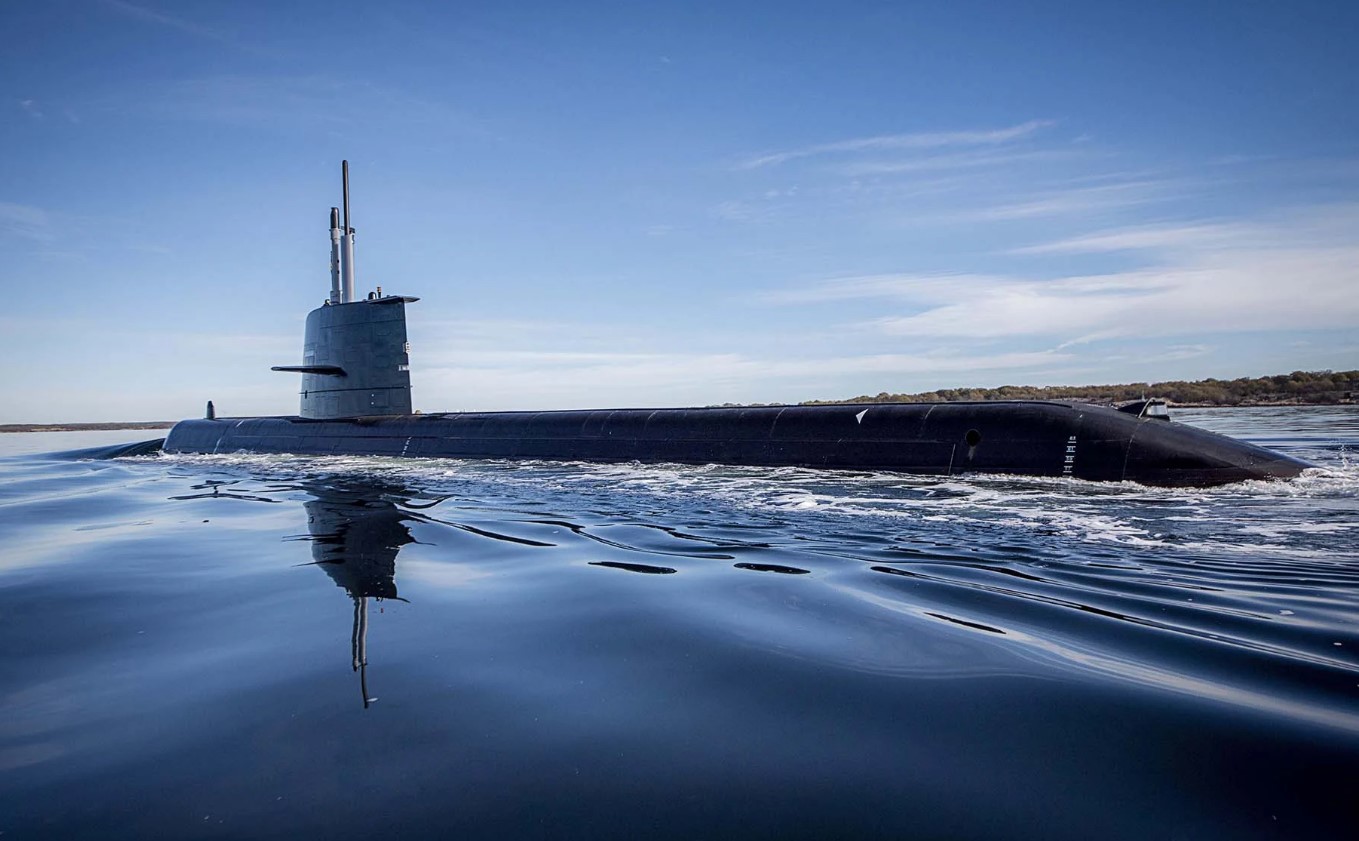
The Stirling-powered Gotland runs more quietly than a nuclear-powered submarine, which must employ noise-producing coolant pumps in their reactors.
The Gotland class does possess many other features that make it adept at evading detection.
It mounts 27 electromagnets designed to counteract its magnetic signature to Magnetic Anomaly Detectors. Its hull benefits from sonar-resistant coatings, while the tower is made of radar-absorbent materials. Machinery on the interior is coated with rubber acoustic-deadening buffers to minimize detectability by sonar.
The Gotland is also exceedingly manoeuvrable thanks to the combined six manoeuvring surfaces on its X-shaped rudder and sail, allowing it to operate close to the sea floor and pull off tight turns.
The article then went on to say:
Because the stealthy boat proved the ultimate challenge to US antisubmarine ships in international exercises, the US Navy leased the Gotland and its crew for two years to conduct antisubmarine exercises. The results convinced the US Navy its undersea sensors simply were not up to dealing with the stealthy AIP boats.
However, the Gotland was merely the first of many AIP-powered submarine designs — some with twice the underwater endurance. And Sweden is by no means the only country to be fielding them.
China has two diesel submarine types using Stirling engines. Fifteen of the earlier Type 039A Yuan class have been built in four variants, with more than 20 more planned or already under construction.
Beijing also has a single Type 032 Qing-class vessel that can remain underwater for 30 days. It believed to be the largest operational diesel submarine in the world and boasts seven Vertical Launch System cells capable of firing off cruise missiles and ballistic missiles.
Diesel powered submarines are apparently particularly useful in assisting in maintaining littoral integrity if one is able to crew them. The Americans have determined to only have nuclear submarines so they can roam the world underwater – an international police force. Why else would a nation commit itself to such a program? The British want to join in if Australia will help to pay for their ailing submarine building industry– why else would the British want to use Perth as a base unless they want to join the USA in this role as a police force. Really, do we want to be part of this folly – “the final link in the chain” as Keating so bluntly put it, of nuclear submarines lurking in the Pacific Ocean.
There is another incidental fact I have learnt trying to fathom why we are committing ourselves to such enormous expenditure. The Collins class submarine was taken from a Swedish design. The Swedes have a fleet of five diesel-powered submarines, but under the auspice of Saab Kockum have committed themselves to building the new A-26 Blekinge submarine by next year, constantly advancing the technology and have ordered two more.
Finally, more than anything, Australia needs a debate on these matters – and outside the wardroom. I would like to know what we are defending and who really is the enemy, apart from the cost being committed for the next generations of Australians who will be forced to pay.
Mud by Name; but not by Taste
Continuing my occasional reminiscences of the most memorable seafood meals that I have experienced, this one concerns the giant mud crab, I thought wrongly to be solely an Australian delicacy. The crabs are caught in sheltered estuaries and mangrove areas, favouring the soft mud below low tide levels in Northern Australian waters. The flavours are distinctive; some say sweet; but like so many tastes which stick in the memory – mud crabs caught in the wild are distinctive. I first remember a large tray of these crabs on a VIP flight back in the 1970s when I first realised what I had been missing. Lobster was relegated to second place from that day on until many years later when I ate farmed mud crab fed on chicken meal. That unique taste had been lost. It was quite a disappointment.
On this night, after working in Mackay all day, we were recommended this place to eat on the outskirts of the city. Unprepossessing, the premises resembled a hut, and it was called The Hut or some such. It was 1988. As it so happened the British Lions Rugby League Team was in town and following them was a large entourage of British journalists because the whole trip was more of a jaunt than a tight schedule of Tests.
When we entered this establishment, it was somewhat basic; “homely” would have been a good epithet if the place had not been swarming with middle-aged Poms, who seemed to have done with any formal activity. The alcoholic hubbub swirled around us, outsiders in our own country. Nevertheless, we secured a table in a corner facing the kitchen, so when the owner/chef emerged with this large mud crab, and asked whether anybody would care to have it for a meal, we responded with alacrity, such that the deal was done before the Fourth Estate had time to turn around, let alone react. Perhaps they would have enthused more over it, although there was a ripple of “got another one, guv?”
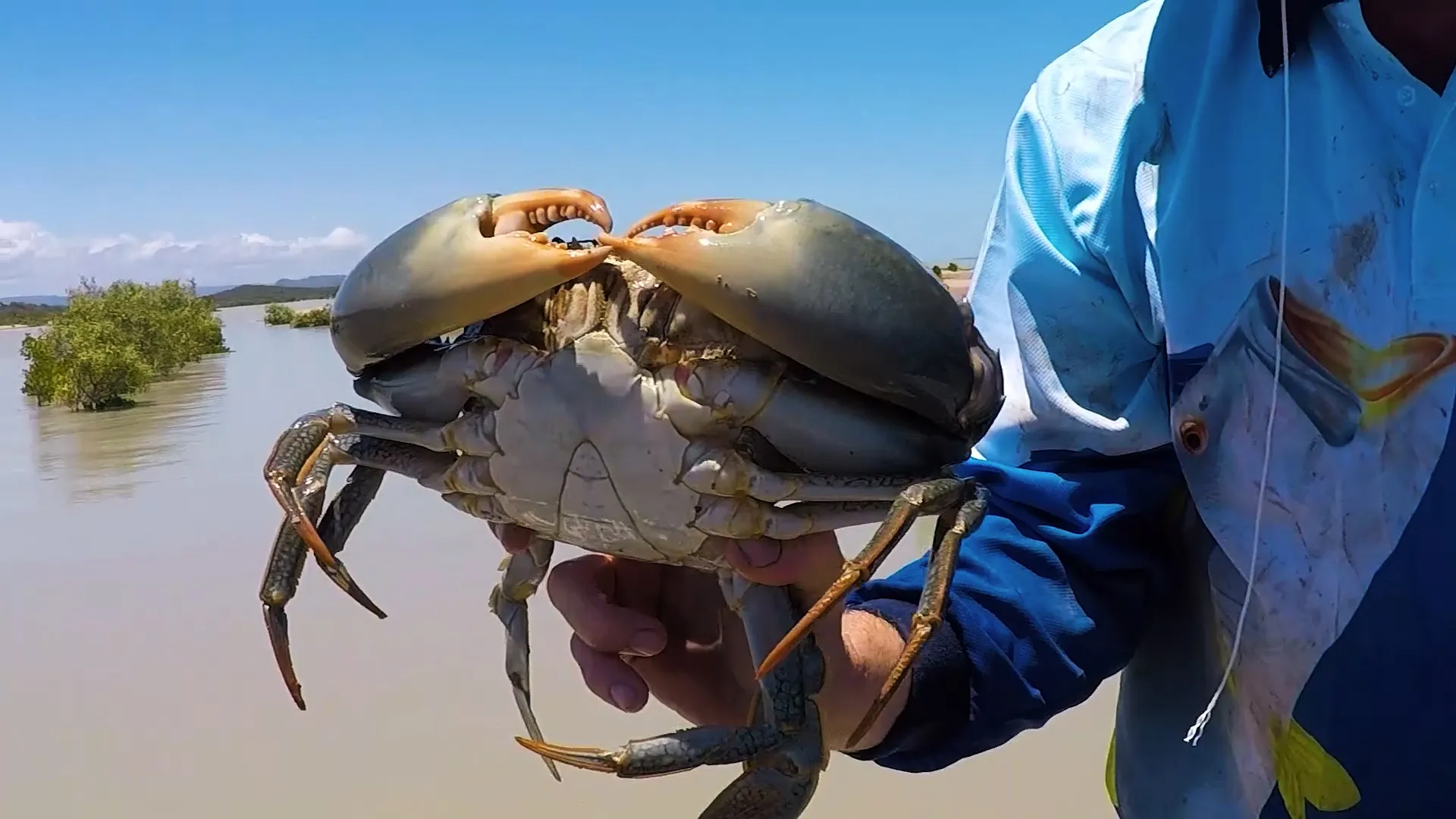 This mud crab had just been caught and dropped off at the café. I don’t know whether it was the only one, but I doubt whether I have ever seen one bigger. Even though I had actually cooked my own earlier in the decade, there was something about this mud crab feast which made it special. Unfortunately, with time, the wild crustacea and fish are increasingly a product of farming rather than being gathered from the wild. Mud crab farming is very popular in some Asian countries – Bangladesh, India, Thailand, Philippines. Mud crab is in huge demand, with equally huge prices in the international market, and thus they have mostly lost that uniqueness which we experienced one night in Mackay.
This mud crab had just been caught and dropped off at the café. I don’t know whether it was the only one, but I doubt whether I have ever seen one bigger. Even though I had actually cooked my own earlier in the decade, there was something about this mud crab feast which made it special. Unfortunately, with time, the wild crustacea and fish are increasingly a product of farming rather than being gathered from the wild. Mud crab farming is very popular in some Asian countries – Bangladesh, India, Thailand, Philippines. Mud crab is in huge demand, with equally huge prices in the international market, and thus they have mostly lost that uniqueness which we experienced one night in Mackay.
Dr Lee Gruner
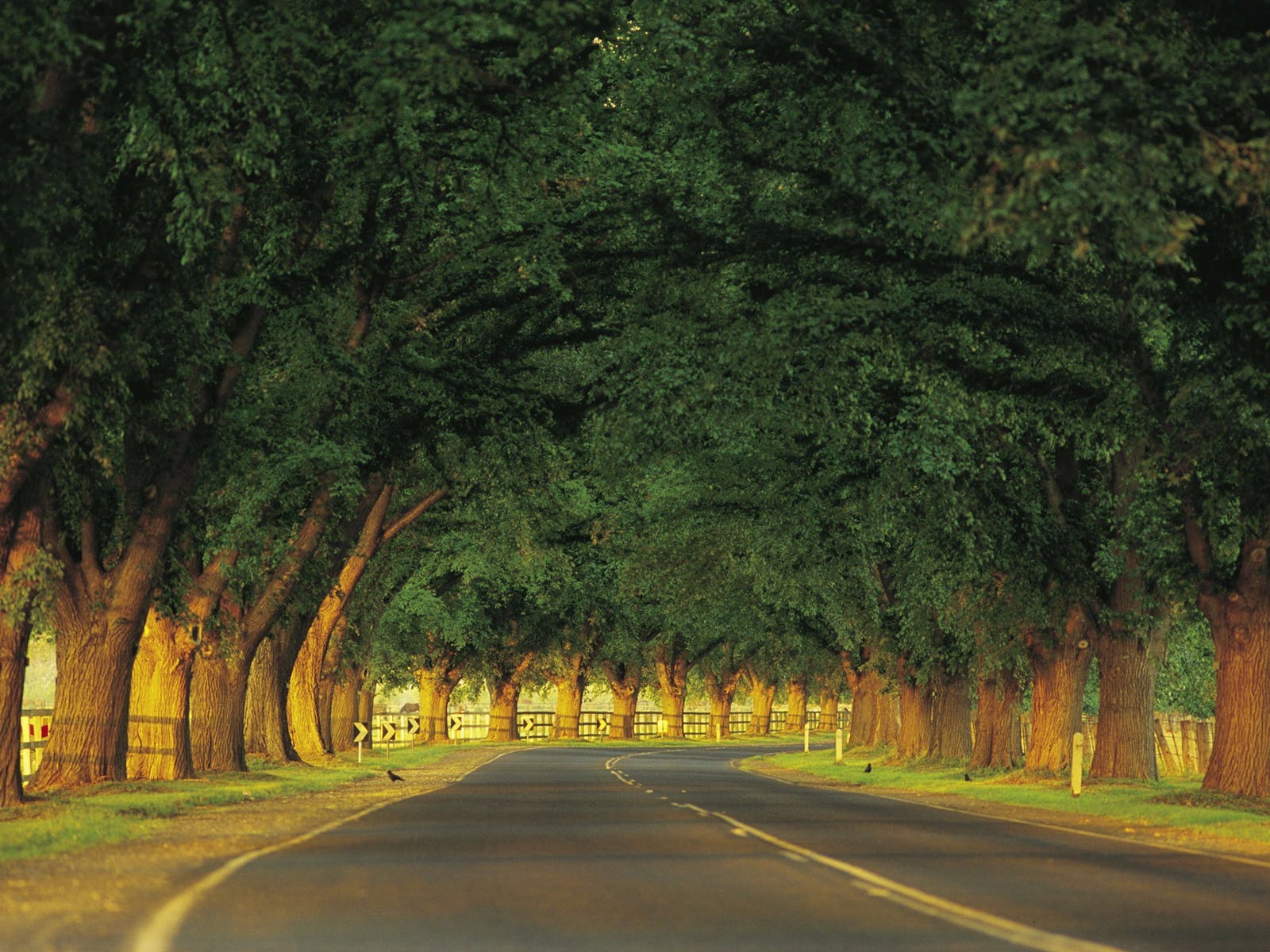
Dr Lee Gruner has just been banned from medical practice for 10 years. She is 74, and at that age, she would probably be retired or be living off the fruits of her labour, irrespective of the Medical Board’s finding. She has been punished for her actions at the Bacchus Marsh Health Service (Djerriwarrh Health) which occurred over a decade ago. It was evident to me well before that time that Dr Gruner was a smooth talker without much substance. The Medical Board’s finding about her behaviour even astounded me, although I was well aware of the dysfunctional nature of the Bacchus Marsh health service even then.
Gruner had always projected herself as an expert in quality assurance (QA), which is almost a Medusa in the number of jargon-laden interpretations to describe a very simple concept – the actual improvement of health care achieved against projected proposed improvement over a specified period. My association with managing improvement of health care first occurred with involvement in a successful “management by objectives” project in 1971-73 at the Royal Melbourne Hospital.
In 1975, the then Federal Minister of Health, Ralph Hunt, challenged the medical profession to formally assure quality in health care. As a result, the Australian Medical Association (AMA) together with the then Australian Council on Hospital Standards (ACHS) set up the ACHS/AMA Peer Review Resource Centre and the then AMA President challenged me to take on the portfolio of quality assurance and peer review. Within a decade I found myself as President of the International Society of Quality Assurance. During this time, it gave me a wide perspective of those involved in the various “players”, both in Australia and overseas.
While there was a cohort of health professionals genuinely interested in improving the quality of health care, I found there were many flim-flam persons, hucksters and grifters who drifted around drawing flow diagrams and pie charts, writing monographs telling the clinicians what they should do, speaking in the distinctive “quality assurance creole” and holding seminars and workshops purporting to be fonts of learning. Much of this QA movement was translated into more bureaucracy, which led to the creation every three years of shelves of folders containing rules and requirements, which were neatly stacked in the administrative section of the hospitals, but to which the clinicians in general were impervious.
Effective interplay between management and clinicians is essential if true quality improvement can occur and be maintained. In addition, the quality assurance movement flourished until the central agencies started extracting “efficiency dividends” from the health sector, and the hospitals were the most vulnerable as targets for such “efficiencies”. Costs were paramount.
Dr Gruner with her gush, winning smile and line of blarney, fitted in well with this scene. She became Censor and then President of the Royal Australasian College of Medical Administrators (RACMA), being good mates with the then Chief Executive Officer. Yes, Dr Gruner constructed an impressive façade.
This façade crumbled before the findings of the Medical Board of Australia. Her behaviour, as set out in the Board’s findings, was truly appalling, given that under her medical management, neonatal management was wanting.
In 2021, Dr Surindar Parhar, who had been chief of obstetrics and women’s health between 2008 and 2015 at Bacchus Marsh Health Service, was formally reprimanded and disqualified from applying to practise medicine for 12 years after a finding of professional misconduct related to his time at the Service. But the doctor had surrendered his medical registration seven years previously, so the sanction was very much post hoc. The following is the finding, six years after he stopped practising; it happened under Dr Gruner’s watch and is equally appalling as her reprehensible neglect. (sic)
Dr Parhar was found by the Tribunal to have failed in almost every aspect of his role. The Tribunal found that he failed to conduct formal reviews in nine cases of perinatal death, and where reviews were conducted, he had failed to give sufficient clinical input and adequate processes were not used. Further, between 2009 – 2015, he failed to engage an external reviewer for cases involving foetal and neonatal deaths, failed to communicate important information and failed to supervise or assess junior practitioners who he was directly responsible for. Additionally, the Tribunal found that Dr Parhar failed to improve or maintain his own professional performance, did not keep accurate or legible clinical records, and inadequately investigated, diagnosed and managed a patient’s care.
Incidentally, the former nursing director and the maternity services manager were both banned for 10 years. Several other healthcare workers including senior midwives, junior doctors, a clinical support director and a physiotherapist were also disciplined.
Gruner now has no credibility and her neglect was allowed to continue for far too long. Nevertheless, the RACMA and the level of remuneration its Fellows attract has also gone too long without scrutiny. Some years ago, I offered to assist the College after a decade’s stint during which I was able to refine the role of Director of Medical Services (DMS) of small health services. I had a formal contract with each service at which I worked, and I had a modest base at one of the health services with shared secretarial services. From personal experience, I believe that the findings in relation to Dr Gruner’s position are sufficient reason to investigate the whole state of medical administration, where there are a number of aberrant practices, which Dr Gruner’s action highlighted. She just got caught. In Victoria there apparently is a tool to assist hospitals in appointing a DMS, and having read it, this tool is one of the theoretical “flannelling” documents that people like Gruner were adept in constructing to give the appearance of activity.
The task of a DMS is to work with and have the respect of the local doctors and visiting medical specialists; to ensure that the credentialing, scope of practice and privileging of these doctors is aligned with their knowledge and skills; to participate in the hospital management as required; and, as I showed, to extending the DMS role to being director of clinical training, as evidenced by the creation of the Murray to Mountains Intern Training Program. Removing a doctor’s privileging rights is difficult and requires a skillset not immediately obvious in medical administrator training. Moreover, the DMS must be a visible presence, not hidden away in the administrative suite of offices well away from the clinical action.
The other worrying matter shown by this Gruner episode is how long it takes for the Australian Health Practitioner Regulation Agency (AHPRA) to do anything. The Agency publicly displays its satisfaction rating, 1.6 out of 5. It is time the Chief Executive Officer, Martin Fletcher, is put under active scrutiny. An English bureaucrat imported to do a similar job he was employed to do in Great Britain, Fletcher has been in the role for 13 years, so he would know all the steps in the political foxtrot.
The current Federal Health Minister Butler had ordered a rapid review of AHPRA, which seems like a handball rather than “rapid review”. “I am writing to the chair of the Health Ministers’ Meeting to put this issue on the agenda at our next meeting, including a rapid review of the response by jurisdictions to previous reviews.”

I would say the AHPRA obfuscation is less “flannelling’ but rather a “whole suite of blanketing”. As such, Martin Fletcher may tuck in the last “blanket” in rejecting allegations that AHPRA had resisted government engagement and was slow to implement reforms, saying the leadership team was rolling out a “huge” program of work to improve procedures. That “blanket” sure has a lot of fluff.
Much more of this and it will be media suffocation so thick is the “blanket”. Gruner is just one of the cases to serve as a reason for a comprehensive review of AHPRA.
Time for action, and restoration of the integrity of AHPRA, shorn of excessive bureaucracy, but that is the ultimate goal, training quality staff and ensuring the agency does not have the opportunity to hide behind overly restrictive legislation – a matter for urgent Government review – and that the multiple agencies involved don’t allow cases to fall between the cracks. This will require close attention to the profile of those supposed to uphold the standards and in so doing recognise dysfunctional situations such as the one which allowed Gruner to flourish. One missive received yesterday from the current President trying to justify continuing trust in the College credentials, I’m afraid is far from enough.
Mouse Whisper
Will the Floridean Goldenlocks weather yet another Storm? Remember Shakespeare’s The Tempest? The jester Trinculo, on hearing the Storm is coming, utters words perhaps relevant to a forthcoming New York Courtroom appearance:
Alas, the Storm is come again! My best way is to
creep under my gaberdine: there is no other
shelter hereabout. Misery acquaints a man with
strange bed-fellows. I will here shroud till the
dregs of the Storm be past.
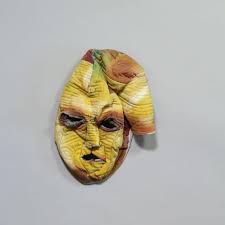

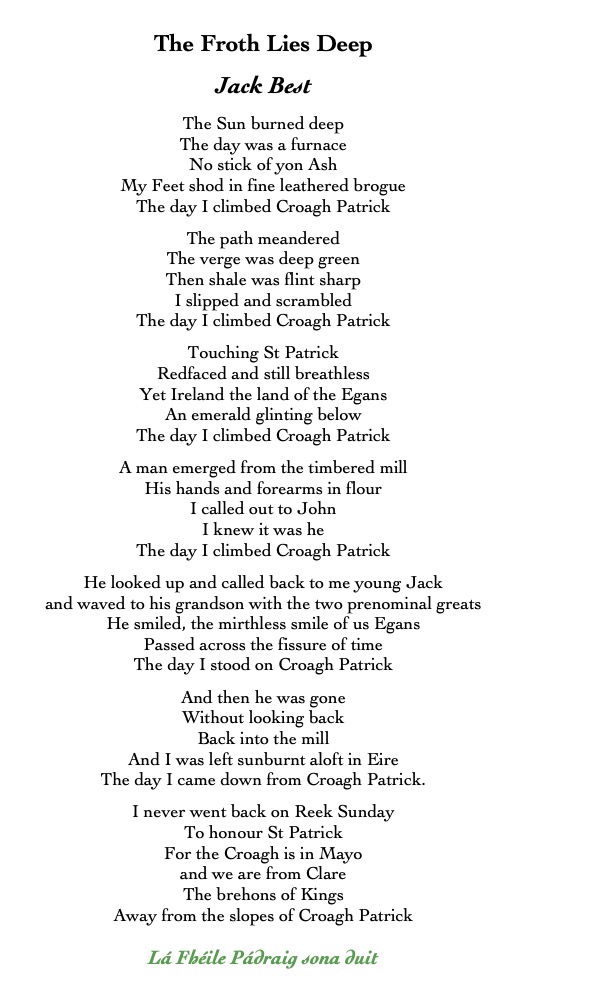


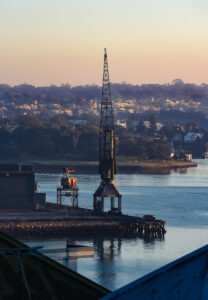



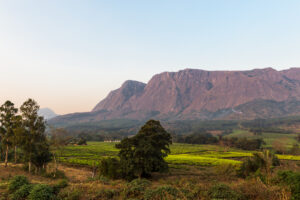
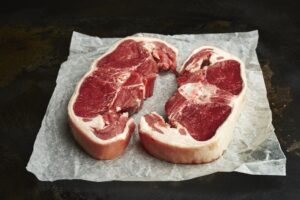
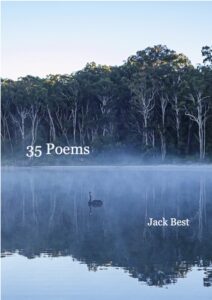
 Our kitchen benchtop is Corian, a synthetic material composed of acrylic polymers and an aluminon trihydrate extracted from bauxite. Marble too has negligible silica, but natural granite and its synthetic offshoot Caesarstone has a variable amount up to 90 per cent silica. Corian is cheaper, but not so resistant to stains and chipping apparently as Caesarstone.
Our kitchen benchtop is Corian, a synthetic material composed of acrylic polymers and an aluminon trihydrate extracted from bauxite. Marble too has negligible silica, but natural granite and its synthetic offshoot Caesarstone has a variable amount up to 90 per cent silica. Corian is cheaper, but not so resistant to stains and chipping apparently as Caesarstone.
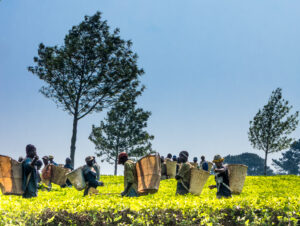 After the First World War a Scot called McLean Kay set up a tea plantation of nearly 900 hectares in Southern Malawi. This estate is called Satemwa, in the centre of which is Huntington House, the residence of the Kays. We spend a couple of nights there. It is not the main tea picking season, but we pass a line of men plucking tea leaves and placing them in shoulder baskets. Here both men and women share the load, unlike earlier in the year, where I had seen in Sri Lanka near Kandy tea leaf being picked by women with their baskets supported by a headband around their foreheads. Here the baskets were supported by the shoulders and the Malawi terraces were not the precipices of the Sri Lanka tea plantations where goats, let alone women with heavy baskets, would be hard pressed to cling. Malawi was way more considerate in the way the tea had been planted for the workers.
After the First World War a Scot called McLean Kay set up a tea plantation of nearly 900 hectares in Southern Malawi. This estate is called Satemwa, in the centre of which is Huntington House, the residence of the Kays. We spend a couple of nights there. It is not the main tea picking season, but we pass a line of men plucking tea leaves and placing them in shoulder baskets. Here both men and women share the load, unlike earlier in the year, where I had seen in Sri Lanka near Kandy tea leaf being picked by women with their baskets supported by a headband around their foreheads. Here the baskets were supported by the shoulders and the Malawi terraces were not the precipices of the Sri Lanka tea plantations where goats, let alone women with heavy baskets, would be hard pressed to cling. Malawi was way more considerate in the way the tea had been planted for the workers.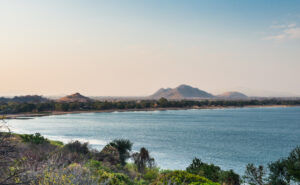
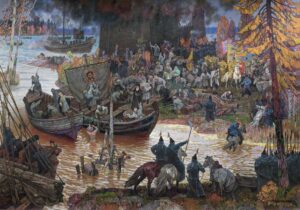
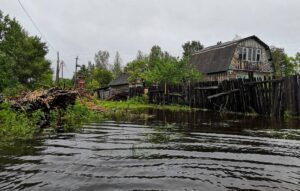

 History does not celebrate the first skin-eaters, cultures around the world now enjoy skin recipes — whether Canadian scrunchions (pork rind), Indonesian krupuk kulit (beef skin), Jewish gribenes (chicken or goose skin cracklings with fried onions), Mexican cueritos (pork rind), Slavic cvarci (pork crackling) or Vietnamese tóp mo (fried pork fat).
History does not celebrate the first skin-eaters, cultures around the world now enjoy skin recipes — whether Canadian scrunchions (pork rind), Indonesian krupuk kulit (beef skin), Jewish gribenes (chicken or goose skin cracklings with fried onions), Mexican cueritos (pork rind), Slavic cvarci (pork crackling) or Vietnamese tóp mo (fried pork fat). 
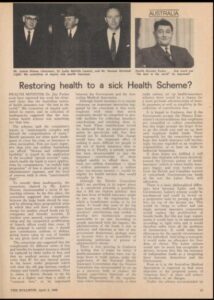
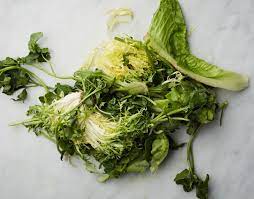 Meanwhile, the AMA sends out media releases printed on warm lettuce leaves.
Meanwhile, the AMA sends out media releases printed on warm lettuce leaves.

 You drive along the winding road South from Hobart into the Land of the Scarecrows. It is a picturesque drive through small villages and past farms. There is a collage of primary produce outlets and markets along the way. Fruit and vegetables are fresh; the taste tells me so. Tomatoes straight off the vine; wonderfully variegated beetroot and radishes; home to stone fruit and once where apple orchards and hop field dominated, now there are cherry trees covered in netting, and at the end of summer the trees are showing exhaustion after bountiful crops. This is the Huon Valley.
You drive along the winding road South from Hobart into the Land of the Scarecrows. It is a picturesque drive through small villages and past farms. There is a collage of primary produce outlets and markets along the way. Fruit and vegetables are fresh; the taste tells me so. Tomatoes straight off the vine; wonderfully variegated beetroot and radishes; home to stone fruit and once where apple orchards and hop field dominated, now there are cherry trees covered in netting, and at the end of summer the trees are showing exhaustion after bountiful crops. This is the Huon Valley.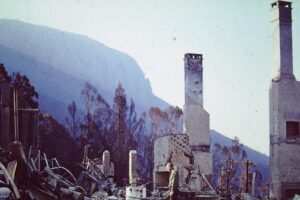 On 7 February 1967 Southern Tasmania was engulfed in fires, an event which came to be known as the Black Tuesday bushfires. They were the most deadly bushfires that Tasmania has ever experienced, leaving 62 people dead, 900 injured and over seven thousand homeless. The fires were particularly linked with Snug, which was almost completely razed. This occurred after a very rainy year in 1966, and there was plenty of bush to burn – as it did when the temperature rose, the wind came from the north-west and the humidity was low.
On 7 February 1967 Southern Tasmania was engulfed in fires, an event which came to be known as the Black Tuesday bushfires. They were the most deadly bushfires that Tasmania has ever experienced, leaving 62 people dead, 900 injured and over seven thousand homeless. The fires were particularly linked with Snug, which was almost completely razed. This occurred after a very rainy year in 1966, and there was plenty of bush to burn – as it did when the temperature rose, the wind came from the north-west and the humidity was low. But it’s one thing to read that nearly 5 million people played last year — an increase of nearly 40 percent over 2020, according to the sports association — and another to watch a loved one get sucked into the game’s gravitational pull. Flying to pickleball camps, joining multiple pickleball leagues, eying a $145 designer pickleball dress, and playing through the pain of pickleball elbow.
But it’s one thing to read that nearly 5 million people played last year — an increase of nearly 40 percent over 2020, according to the sports association — and another to watch a loved one get sucked into the game’s gravitational pull. Flying to pickleball camps, joining multiple pickleball leagues, eying a $145 designer pickleball dress, and playing through the pain of pickleball elbow.

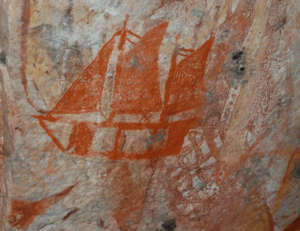
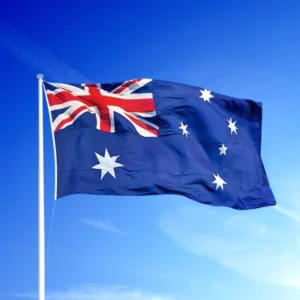
 First, I would remove the Union Jack, and re-position the Southern Cross in the night sky. I would prefer wattle as emblematic given that the Australian colours are not dark blue, but green and gold. To me, wattle provides the gold and the blue green of the eucalyptus as the background. In spring, in the southern states, the land is a tapestry of green and gold. Why do our representatives dress in a grass green colour given that this is a country of blue mountains, which essentially are the eucalyptus colour from a distance – and a suitable colour acknowledging this green merging into the blue should not be a great challenge to mix?
First, I would remove the Union Jack, and re-position the Southern Cross in the night sky. I would prefer wattle as emblematic given that the Australian colours are not dark blue, but green and gold. To me, wattle provides the gold and the blue green of the eucalyptus as the background. In spring, in the southern states, the land is a tapestry of green and gold. Why do our representatives dress in a grass green colour given that this is a country of blue mountains, which essentially are the eucalyptus colour from a distance – and a suitable colour acknowledging this green merging into the blue should not be a great challenge to mix? Others said to me, why bother? Still a lie is a lie and needs to be corrected. Now the political process, as with any combative arrangement, attracts the jackals and hyenas to feed on the carrion of this process. By this I refer to the detritus of innuendo and lies served up in the clubs, and board rooms of Australia amid the sly chortles wreathed in cigar smoke and the glittering whisky decanters on the pour.
Others said to me, why bother? Still a lie is a lie and needs to be corrected. Now the political process, as with any combative arrangement, attracts the jackals and hyenas to feed on the carrion of this process. By this I refer to the detritus of innuendo and lies served up in the clubs, and board rooms of Australia amid the sly chortles wreathed in cigar smoke and the glittering whisky decanters on the pour.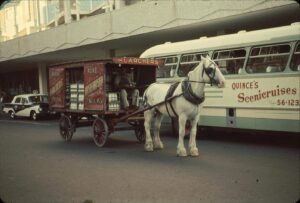

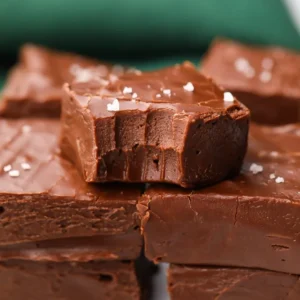

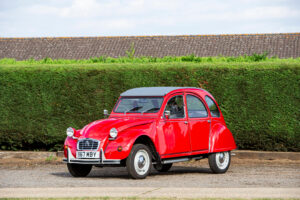






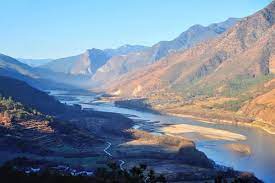
 The Defence force spends somewhere in the region of $40m a year in recruitment of men and women to the army, navy and air force. Nowhere in the advertisements is the message, join the defence force to be killed fighting for your country. Rather, learn skills, enjoy yourself.
The Defence force spends somewhere in the region of $40m a year in recruitment of men and women to the army, navy and air force. Nowhere in the advertisements is the message, join the defence force to be killed fighting for your country. Rather, learn skills, enjoy yourself. The other perception of the Church is how ludicrous some of the regalia looks when placed alongside stated conservative attitudes. After all, look at the fancy dress of the church dignitaries and then fast forward to the forthcoming dress-ups for mardi gras by the queer dignitaries.
The other perception of the Church is how ludicrous some of the regalia looks when placed alongside stated conservative attitudes. After all, look at the fancy dress of the church dignitaries and then fast forward to the forthcoming dress-ups for mardi gras by the queer dignitaries.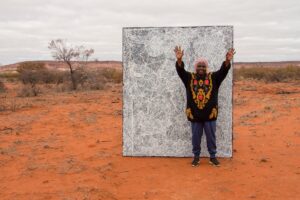
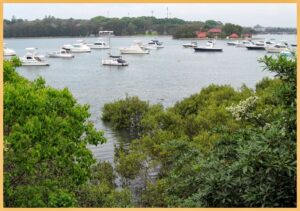 When I used to run the Iron Cove, the mangroves were there, but not to the height and extent as the mangrove forest now. It used to be stunted and did not exhibit its current lushness – rather it was a swamp bordering on the estuary, the water flowing tidally, and at ebbtide, it was a muddy swamp with just a thin cover of mangroves. Now it is different and given the mangrove so essential for water hygiene, maybe the underlying pollution will diminish.
When I used to run the Iron Cove, the mangroves were there, but not to the height and extent as the mangrove forest now. It used to be stunted and did not exhibit its current lushness – rather it was a swamp bordering on the estuary, the water flowing tidally, and at ebbtide, it was a muddy swamp with just a thin cover of mangroves. Now it is different and given the mangrove so essential for water hygiene, maybe the underlying pollution will diminish.




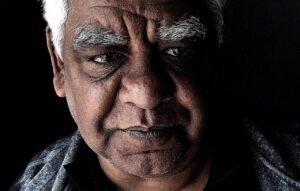
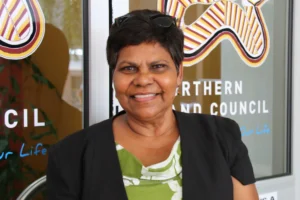

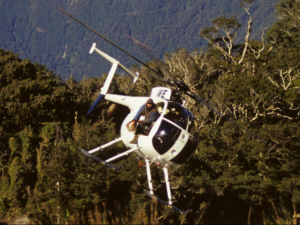
 Deer have a number of advantages. There is this lack of recognition of how dangerous they are. Unlike feral horses in the high country, they hide away from urban Australia. Their destructive effect is complicated by perceptions of deer, either being dewy-eyed fawns – the bambi effect, or alternatively projecting the majesty of the Monarch of the Glen. The hunter lobby is very powerful given that, in both the Victorian and New South Wales parliaments, there are representatives of Shooters, Fishers and Farmers Party.
Deer have a number of advantages. There is this lack of recognition of how dangerous they are. Unlike feral horses in the high country, they hide away from urban Australia. Their destructive effect is complicated by perceptions of deer, either being dewy-eyed fawns – the bambi effect, or alternatively projecting the majesty of the Monarch of the Glen. The hunter lobby is very powerful given that, in both the Victorian and New South Wales parliaments, there are representatives of Shooters, Fishers and Farmers Party.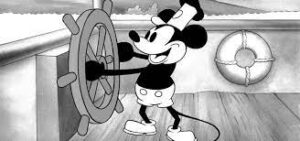
 I once knew a bloke who played “chicken” with his fuel supply. He would not fill up until the tank was nearly empty. It was his defining quirk. It was how he played destiny. On one occasion when he was completely out of fuel, he had to roll down a hill where fortunately at the foot was a service station. However, he was always proud when he had less than five kilometres worth in the tank, before he filled it.
I once knew a bloke who played “chicken” with his fuel supply. He would not fill up until the tank was nearly empty. It was his defining quirk. It was how he played destiny. On one occasion when he was completely out of fuel, he had to roll down a hill where fortunately at the foot was a service station. However, he was always proud when he had less than five kilometres worth in the tank, before he filled it.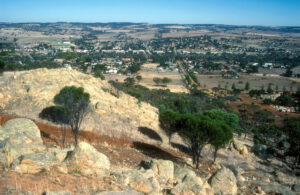



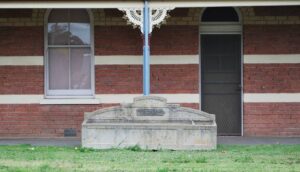



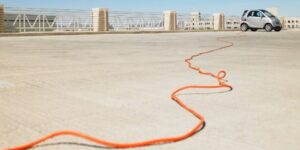
 There is a term “Nazi chic” which, as one writer wrote: “From high end designers to campy trends like “swastikawaii”, ” the iconography of Nazi style has elbowed its way through history, whether its wearers promote its ideology or not.” You see echoes of this in the uniform of those services which dress in dark leathers and buzz round on motorcycles in pursuit of the errant motorist. In fact, if you look at a photo of a German officer such as General Rommel, you see a man in a well-tailored uniform, and the fashionista that appropriate such a uniform, they do not seek meaning, rather they concentrate on appearance.
There is a term “Nazi chic” which, as one writer wrote: “From high end designers to campy trends like “swastikawaii”, ” the iconography of Nazi style has elbowed its way through history, whether its wearers promote its ideology or not.” You see echoes of this in the uniform of those services which dress in dark leathers and buzz round on motorcycles in pursuit of the errant motorist. In fact, if you look at a photo of a German officer such as General Rommel, you see a man in a well-tailored uniform, and the fashionista that appropriate such a uniform, they do not seek meaning, rather they concentrate on appearance.
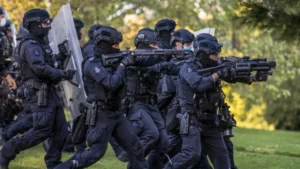
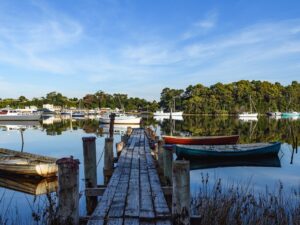
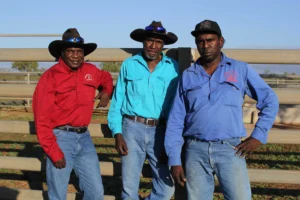 But what saddened me in watching the Brunette Downs episode, is that there seemed to be little interaction at a personal level between whitefella and blackfella. Sure as one the Aboriginal men, Elvis said working conditions had vastly improved – and one of the older white men entrusted to training the newcomers said how much he had learnt from the Aboriginal stockmen, a theme not further pursued as Backroads reverted to the Blue Hills view of the Bush.
But what saddened me in watching the Brunette Downs episode, is that there seemed to be little interaction at a personal level between whitefella and blackfella. Sure as one the Aboriginal men, Elvis said working conditions had vastly improved – and one of the older white men entrusted to training the newcomers said how much he had learnt from the Aboriginal stockmen, a theme not further pursued as Backroads reverted to the Blue Hills view of the Bush.